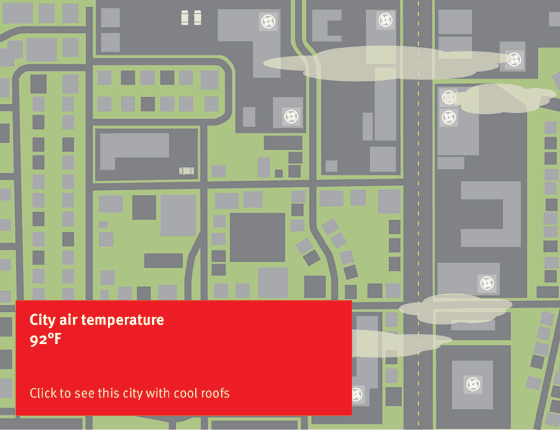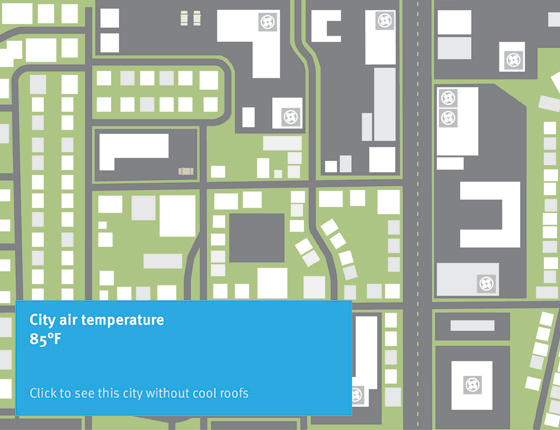Cool roofs counter the urban “heat island” effect, for cooler and cleaner city air.
Cool roofs decrease the ambient air temperature in individual cities by removing easily heated black surfaces, thereby countering the “heat island” effect and helping to improve air quality.


Pavements and roofs comprise approximately 60% of city surfaces. Cool roofs and cool pavements can help reflect away the sweltering temperatures of summer urban heat islands, improving air quality and comfort. Widespread installations of cool roofs and pavements can reduce summer air temperatures in cities by 2 to 3 degrees Celsius (4 to 5 degrees Fahrenheit).
Urban heat islands result from the many square miles of dark roofs and pavement in cities. In summer months, urban areas can be a few degrees Celsius hotter than surrounding rural areas due to the heat island effect. Increasing the reflectance, also known as the albedo, of urban surfaces (roofs and pavements) can reduce the summertime urban ambient air temperature, making cities more comfortable and also improving air quality (because smog forms more readily on hot days). In the Los Angeles basin, reroofing and repaving with lighter colors, in combination with planting shade trees, could reduce smog levels by about 10%.
Today, for the first time in human history, over half of the world’s population lives in urban areas. By 2040 that fraction is expected to reach 70%. Pavements and roofs comprise over 60% of urban surfaces (typically roofs account for 20-25% and pavements for about 40%). Most roofing and paving materials are dark and typically absorb over 80% of the incoming sunlight, converting it into heat. This built environment of dark urban surfaces in which we live has a larger effect on the climate than most people realize. Most urban developments are exacerbating the stresses of our warming climate by building with dark, absorptive materials. If they used reflective materials instead, these developments could become an effective tool for mitigating the impacts of climate change.
For more in-depth explanations, read A Practical Guide to Cool Roofs and Cool Pavements on our Toolkit site.
